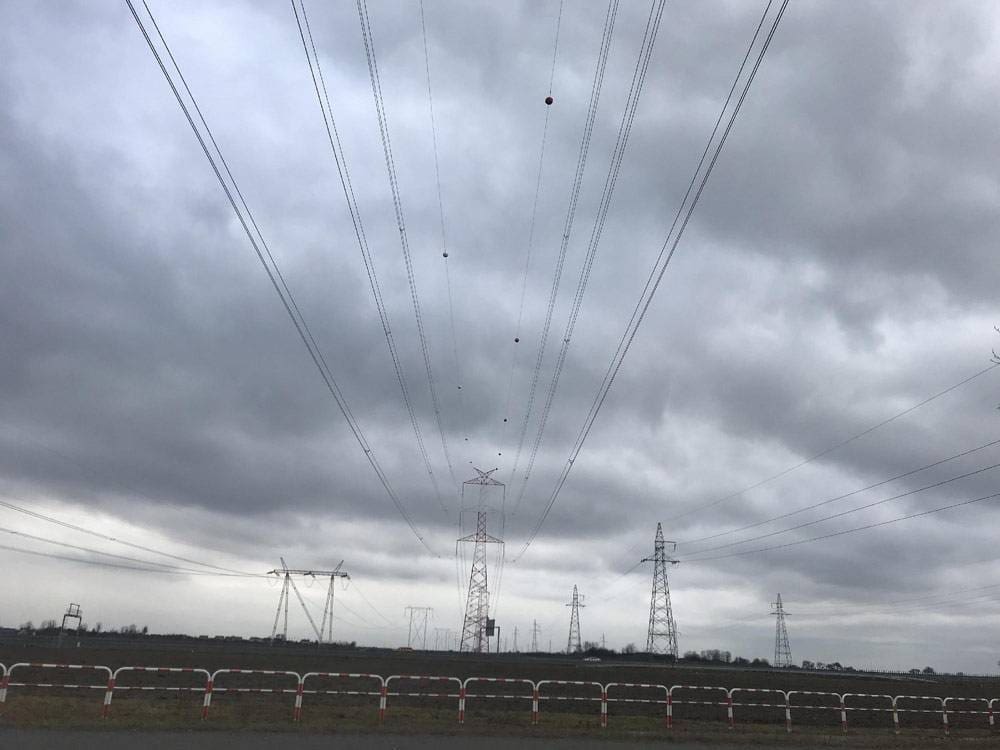Designing Overhead Lines – Step-By-Step Process
 Designing overhead power lines
Designing overhead power lines
Creating a power grid is a complex process that requires coordination among many professionals. In the case of overhead line design, it is very common to implement the “design and build” investment mode of general order, without indicating a specific route of the power line. What is the process of designing and implementing such an investment?
Design and construction of overhead lines according to “design and build” scheme is related with high risk on the part of the contractor. It is up to the contractor to choose the route of the line, and this always involves critical “points” in the plan of such an investment.
- Planning conditions – compliance of the project (overhead power line) with the Study of Conditions and Directions of Spatial Development and the Local Spatial Development Plan.
- Environmental conditions – possible affiliation of areas for high voltage transmission lines to Natura 2000 areas, natural reserves, protected areas, landscape parks, etc.
- Legal considerations – obtaining the right to use the property for construction of overhead lines and obtaining a transmission easement.
Stage 1 – analysis of field conditions
Designing overhead lines in this mode begins with the analysis of field conditions, i.e. current and planned land use on the basis of MPZP (Local Development Plan). The transmission line route is primarily affected by the presence of residential and zoned land, industrial and forest land, airports, and other significant land use areas.
In the case of 220 kV and 400 kV overhead lines , it is possible to apply for a decision on determining the location of strategic investments in the transmission network, which significantly accelerates obtaining a number of other agreements. In the case of lines with voltage up to 110 kV, a “traditional” formal and legal procedure must be followed, which often translates into a long-term process of designing and obtaining the right to use land for construction purposes.
Stage 2 – designing overhead lines
Once the paperwork for selecting the optimal transmission line route is complete, it is time to make basic design of the power line, including its profile. This design includes the most important technical solutions used in this particular investment, i.e.: the construction of poles and foundations, insulation, the type of phase and lightning conductors, line marking and a proposal of non-standard solutions, for example, night marking.
Many industry arrangements must also be obtained at this stage, the number of which is determined by the presence of crossed facilities. The most difficult arrangements include those with the Polish State Railways (PKP), Regional Water Management Authorities (RZGW), and GAZ-SYSTEM. This is also the right time to drill geological boreholes in pole locations, which often requires the development and agreement of geological engineering documentation with the authorities.
Stage 3 – detailed design of the transmission line
The next stage is to create a detailed design, which aims to develop detailed technical solutions. When constructing overhead lines, a very important issue is the optimal spacing of the support structures, depending on the terrain conditions. Designing foundations for overhead power line poles is a complex process, because it depends on many factors: type of supporting structure, type of soil at a given site, groundwater level, accessibility of specialized machinery (such as piling rigs, drilling rigs, excavators), etc.
Stage 4 – construction and installation works
The implementation phase of overhead line construction has its own rules and looks slightly different in each individual case. A very important consideration at this stage is the ability to obtain a consent for the line shutdown from transmission or distribution system operator. When this is not possible, the implementation of the project can be postponed for many months.
Looking for an experienced company to efficiently complete your overhead line construction from A to Z?
You are welcome to contact Eltel Networks.

Read: Golden Rules For Safe Work On High-Voltage Lines
Overhead line Czarna – Pasikurowice according to the “design and build” scheme
The modern 400 kV Czarna – Pasikurowice double circuit line, designed and built by Eltel Networks, was built in place of the old transmission line from the 60s. The route passes mainly through agricultural land, small areas of forest and near residential areas. It also crosses the Odra River – so special types of ice apron foundations were used for poles located in the river embankment. The route of this power line also passes close to the airport and, for this reason, day and night aerial signage was used along a significant portion of the line. Total length of the designed overhead line was 52.8 km. Prior to obtaining the construction permit, an environmental decision and a decision on the location of strategic investments in the transmission network were obtained.
Explore details of implementation of overhead line Czarna-Pasikurowice.

This may interest you: Electrical services – what to look for when choosing a contractor
Author: Krzysztof Ściobłowski